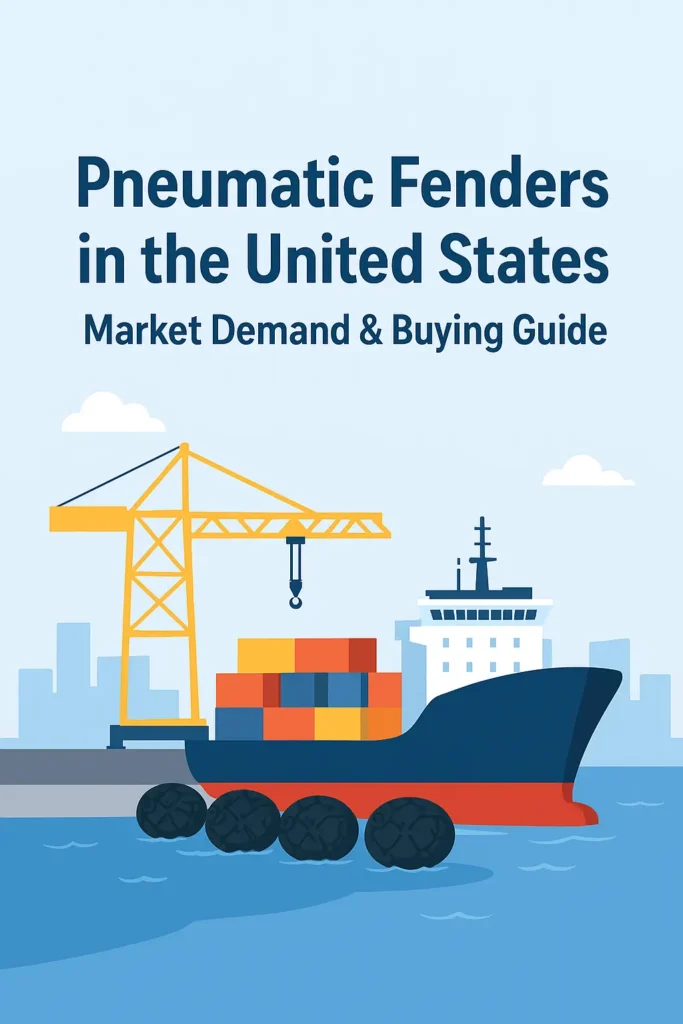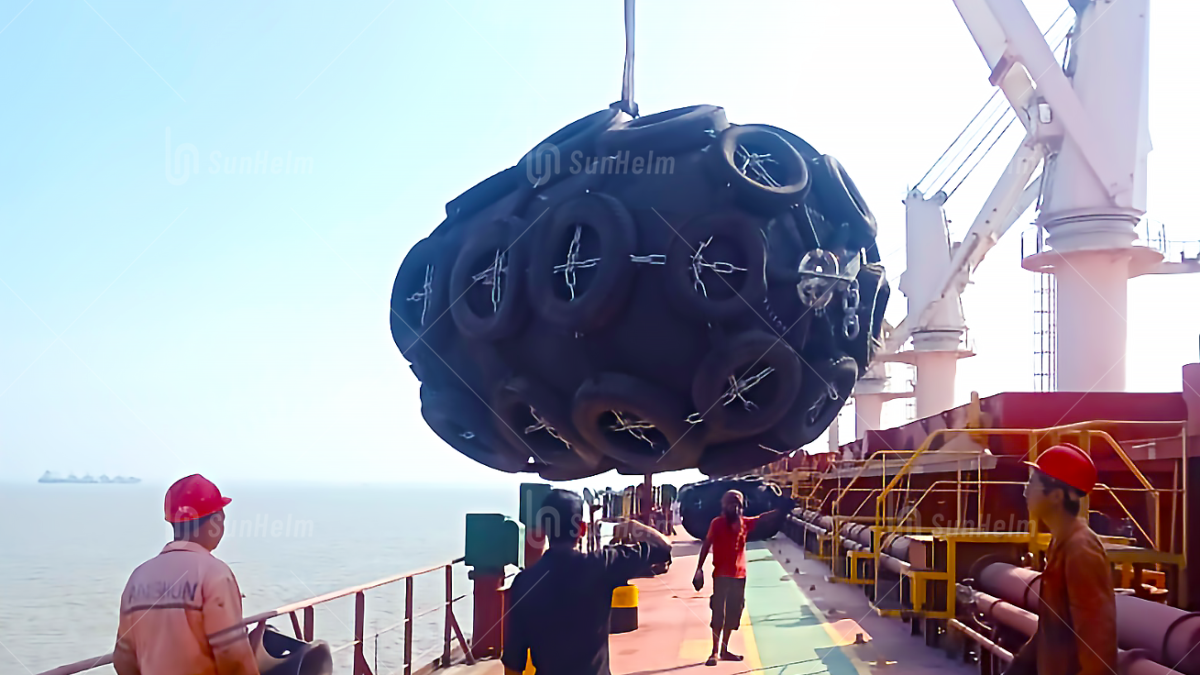Introduction
The United States, with its extensive coastline and global trade activities, has a strong demand for reliable ship protection systems. Pneumatic fenders are among the most widely used solutions for ports, shipyards, and offshore operations. In this article, we will cover the U.S. market overview, applications, supply chain, and a practical buying guide for operators and importers.

Market Overview
The U.S. is home to some of the busiest ports in the world, such as Los Angeles, Long Beach, New York, Houston, and Seattle. As international trade and offshore energy projects expand, the need for durable and efficient fendering systems increases.
Pneumatic fenders are especially popular in the U.S. market because they:
- Provide high energy absorption with low reaction force.
- Can be used for all types of vessels, from cargo ships to naval vessels.
- Are easy to install, reposition, and transport.
- Perform well in harsh marine environments, including extreme weather.
Applications of Pneumatic Fenders in the United States
- Commercial Ports & Container Terminals
- Used for berthing large cargo ships, oil tankers, and container vessels.
- Commonly installed in busy terminals on the East and West Coasts.
- Ship-to-Ship (STS) Transfers
- Widely applied in offshore oil and LNG transfer operations.
- Provide safety by absorbing impact between two vessels.
- Naval Bases & Government Projects
- U.S. Navy and Coast Guard use pneumatic fenders for destroyers, patrol ships, and submarines.
- Offer a reliable solution for heavy-duty defense operations.
- Shipyards & Dry Docks
- Protect vessels during repair and maintenance work.
- Portable and reusable, making them cost-effective.
Supply & Import Process
Although the U.S. has local suppliers, many pneumatic fenders are imported from Asia, especially from China, Korea, and Japan.
The supply process typically includes:
- Manufacturing & customization – fenders are produced according to ISO 17357-1 standards.
- Export shipping – loaded into containers and shipped to U.S. ports.
- Customs clearance – handled by local importers and distributors.
- Distribution – fenders are delivered to shipyards, offshore operators, or directly to port authorities.
Buying Guide – Why Choose Sunhelmmarine Pneumatic Fenders
Sunhelmmarine is a trusted manufacturer and supplier of marine fenders with proven experience in the U.S. market.
Advantages of choosing Sunhelmmarine:
- International certification: ISO 17357-1 compliant pneumatic fenders.
- Flexible options: chain and tire net, sling type, or customized designs.
- Durability: made with reinforced synthetic tire cord layers and high-quality rubber.
- Global supply: regular exports to North America, with logistics support to U.S. ports.
- Competitive price: factory-direct sales for bulk and project-based orders.
How to Order Pneumatic Fenders in the United States
- Who can order? Port authorities, shipyards, offshore contractors, STS service providers, and naval bases.
- How to get a quote? Contact Sunhelmmarine with required size, quantity, and delivery port.
- Shipping options: available via full container load (FCL) or less than container load (LCL).
- Delivery: typical lead time is 3–5 weeks, shipped to major U.S. ports such as Los Angeles, Houston, or New York.
Price Factors of Pneumatic Fenders
The cost of pneumatic fenders depends on several factors:
- Size and dimensions – larger fenders handle bigger vessels and cost more.
- Design type – chain and tire net fenders are more expensive than sling type.
- Order volume – bulk orders significantly reduce unit costs.
- Certification & standards – ISO-compliant fenders may have a higher initial price but guarantee long-term safety.
Examples:
- Small fenders (0.5m × 1.0m): suitable for tugboats and small vessels.
- Medium fenders (2.0m × 3.5m): commonly used for bulk carriers and tankers.
- Large fenders (3.5m × 6.5m and above): designed for VLCCs and offshore platforms.
Conclusion
The demand for pneumatic fenders in the United States continues to grow as ports expand, offshore operations increase, and naval projects upgrade. Choosing the right supplier is essential for safety and cost-effectiveness.
Sunhelmmarine offers high-quality, ISO-certified pneumatic fenders with reliable logistics support to U.S. ports. If you’re looking for durable and efficient marine fender solutions, contact us today for a customized quotation.
FAQ – Pneumatic Fenders in the United States
Q1: Are pneumatic fenders suitable for all vessel types in the United States?
Yes. Pneumatic fenders are designed for small boats, cargo ships, oil tankers, and even naval vessels, making them versatile for U.S. ports and offshore use.
Q2: How long do pneumatic fenders last in U.S. marine environments?
With proper care, high-quality pneumatic fenders from Sunhelmmarine can last 8–12 years, even in harsh saltwater and weather conditions.
Q3: Do U.S. regulations require specific standards for pneumatic fenders?
Yes. Most operators follow ISO 17357-1 standards to ensure safety and performance. Sunhelmmarine’s fenders meet these global requirements.
Q4: How can I import pneumatic fenders into the United States?
Fenders are typically shipped in containers to major ports like Los Angeles, Houston, or New York. Sunhelmmarine provides export support and helps with customs documentation.
Q5: What sizes of pneumatic fenders are commonly used in the United States?
Standard sizes range from 0.5m × 1.0m (for tugboats) up to 4.5m × 9.0m (for VLCCs and offshore platforms), depending on project needs.


